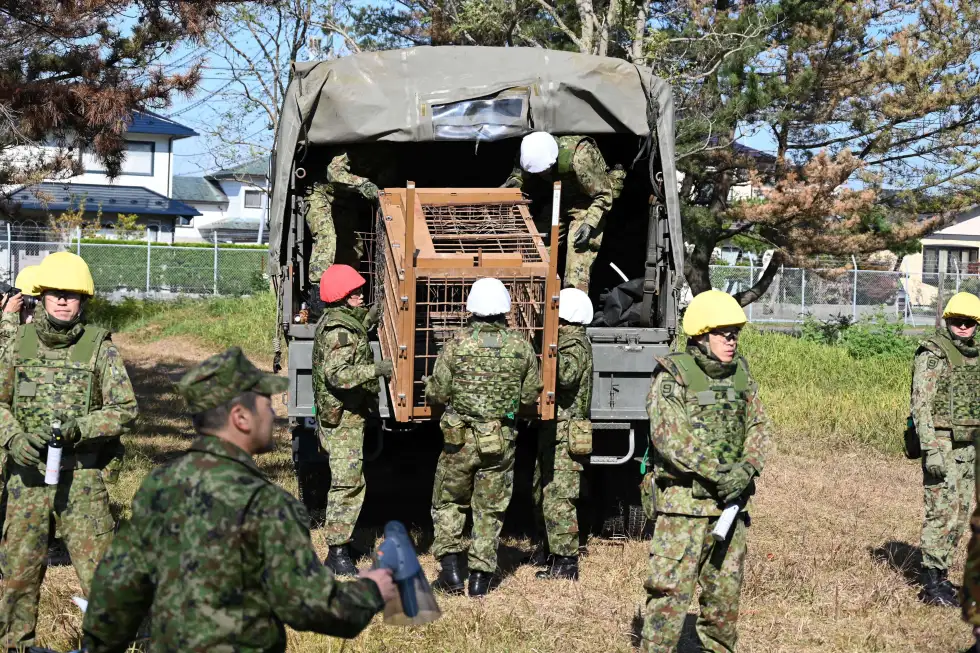Japan’s Defense Ministry has dispatched troops to the northern prefecture of Akita following a surge in bear attacks that have left at least 12 people dead and more than 100 injured nationwide since April. The wave of incidents has shocked communities in Japan’s mountainous regions, where bears have been spotted near schools, train stations, supermarkets, and even hot spring resorts.
Deputy Chief Cabinet Secretary Fumitoshi Sato described the situation as “an urgent matter,” noting that bears now intrude into residential areas daily. The Defense Ministry and Akita prefecture signed an agreement Wednesday afternoon authorizing the deployment of Self Defense Force (SDF) soldiers to assist local authorities.
Under the arrangement, troops will help set food-baited box traps, transport hunters, and handle the disposal of carcasses. However, officials clarified that the soldiers will not use firearms to cull the animals.
Akita Governor Kenta Suzuki said local officials were becoming “desperate” as manpower dwindles amid near-daily reports of attacks. The prefecture, home to about 880,000 residents, has recorded more than 50 bear-related injuries and four deaths since May the highest in the country.
Mounting crisis in Akita
Recent incidents include the death of an elderly woman who was attacked while mushroom-hunting in Yuzawa City over the weekend, another fatal encounter involving a farmer in Akita City late last month, and a newspaper delivery worker mauled by a bear on Tuesday. Authorities estimate that roughly 70 percent of recent bear attacks have occurred in or near residential areas.
Demographic decline fueling wildlife conflicts
Experts attribute the escalating encounters to Japan’s shrinking and aging rural population. As residents abandon farmlands and homes, fruit-bearing trees such as persimmon and chestnut are left unattended, drawing bears into towns in search of food. Once bears develop a taste for human-provided food sources, they tend to return repeatedly.
The shortage of experienced hunters has further complicated the crisis. Many local hunters are elderly, and few are trained specifically to track or capture bears. Specialists have called for police and local authorities to receive training as “government hunters” to strengthen wildlife response efforts.
Government response underway
Defense Minister Shinjiro Koizumi said the mission’s primary objective is to protect civilian life, though he cautioned that Japan’s SDF remains focused on national defense and cannot provide unlimited assistance. So far, Akita is the only prefecture to request troop support.
A government taskforce established last week is working to finalize a national bear response plan by mid-November. Measures under consideration include population surveys, communication systems for bear warnings, and revisions to hunting regulations. Officials are also exploring training programs for experts in both hunting and ecology.
Authorities warn that the lack of preventive measures in Japan’s depopulated northern regions has contributed to the rise of brown bears and Asiatic black bears, underscoring the growing urgency of the crisis.



1 kommentti
I like the efforts you have put in this, regards for all the great content.